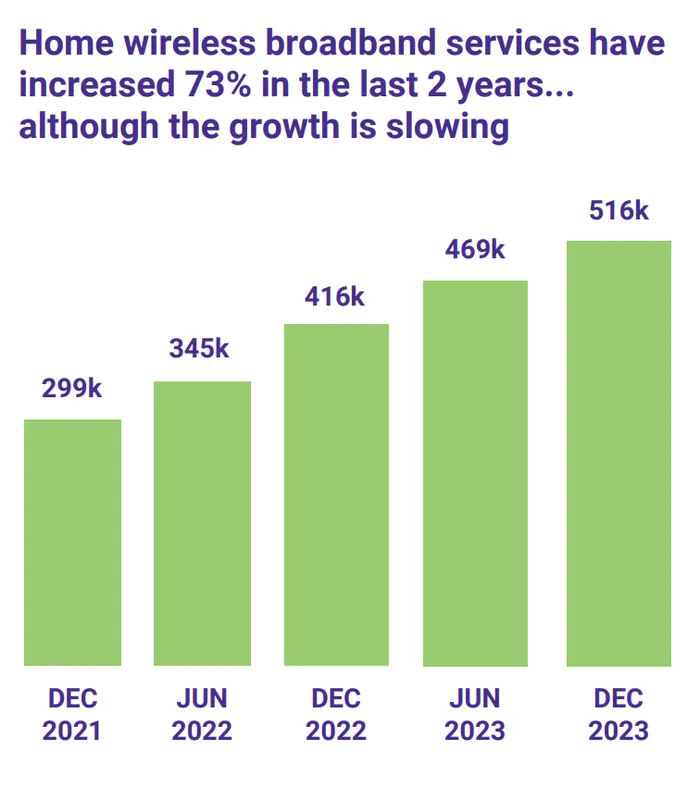The number of Australians using fixed wireless for home broadband has almost doubled in the past two years, according to new data from the country’s competition regulator.
There were more than half a million wireless home broadband users in Australia at the end of last year, the Australian Competition and Consumer Commission stated in its latest annual Internet activity report, published on Thursday.
That might sound like a fairly small number, but it’s a reasonable – and growing – proportion of the country’s 8.5 million retail broadband Internet connections at the same date.
Specifically, there were 510,000 FWA connections provided by mobile network operators at end-2023, an increase of 47,000 over six months and an increase of 73% since the regulator started collecting data on the technology in December 2021; at that point there were 299,000 home wireless broadband services.
Clearly keen to avoid too much FWA hype, the ACCC notes that while growth has been rapid, it is now slowing, but it is worth pointing out that six monthly net adds have hovered at around the 50K mark for the entirety of the reporting period, aside from the second half of 2022 when they came in at 71,000 (see chart below).

Interestingly, data usage over those FWA services is also growing rapidly. FWA clocked up an average of 456 gigabytes per service, per month in this latest report, which represents an increase of 61% over a year. In December 2022 FWA services consumed less than two thirds of the amount of data used by high-speed broadband services provided via the NBN; now the gap has closed significantly, with NBN services averaging only around 9% more usage.
As the ACCC puts it, “the average download per home wireless broadband service has recently become similar to the average for NBN and non-NBN fibre services.”
The regulator’s report shows a thriving FWA market in Australia. However, data from elsewhere paints a slightly different picture, highlighting some of the disadvantages of fixed wireless.
In June analytics company Opensignal published its latest findings on broadband experience in Australia and essentially concluded that FWA users get a much poorer service than those on fibre.
“Our users in Australia have, on average, a far superior broadband experience when using fibre compared to Fixed Wireless Access (FWA),” Opensignal said. It backed up that statement by sharing that 82% of tests on fibre broadband pass its quality thresholds, compared with just 68% for FWA.
Furthermore, fibre users generally have a ‘very good’ experience with on-demand video streaming services, while FWA users are on average looking at ‘good.’ And while fibre users have a stable experience throughout the day, FWA users experience significant congestion-related declines, especially in the afternoon.
In rural areas, fibre users experience much the same service as they do in urban areas, but that is not the case for FWA. In terms of consistent quality, the experience gap between fibre and FWA comes in at 25 percentage points, compared with 12 points in non-rural areas and on video experience the difference is similar; 12 points compared with six.
Essentially, there are various reasons why an Australian household might choose a FWA service over fibre or another fixed broadband technology, and the ACCC’s data shows that many are indeed doing that. But there’s a good chance the service will not be as good as a fibre connection.
Original article can be seen at:
